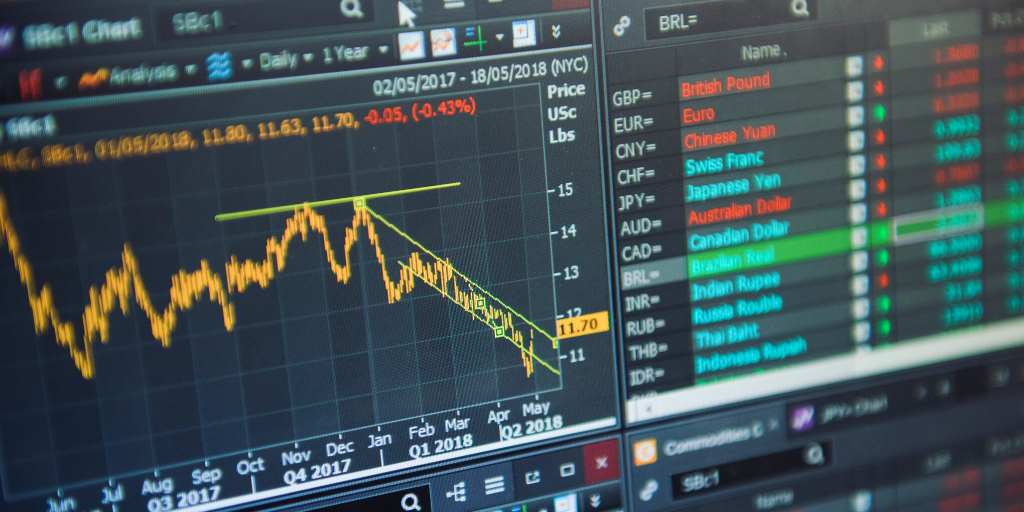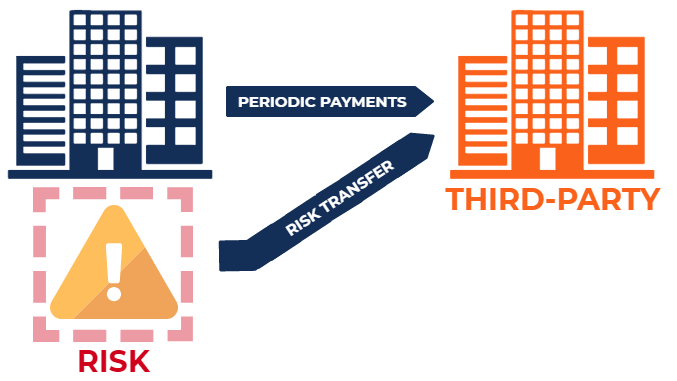Process in Which Derivatives Are Used to Reduce Risk Exposure
Derivatives allow risk related to the price of underlying assets such as commodities to be transferred from one party to another. An analysis of the hedge methods available to reduce said risk.

Infocepts Microstrategy Credit Risk Analysis Dashboard Helps The Chief Risk Officer Cro Of Corporate Who Credit Risk Analysis Credit Rating Risk Management
They are used derivatives can either increase or decrease the amount of risk in your portfolio says.
/trading-d956002670954e38a1b472ac382442c0.jpg)
. Derivatives can be used to mitigate the risk of economic loss arising from changes in the value of the underlying. Every participant in the stock market looks for minimizing their risk. Process of selecting durations for bonds in a portfolio such that gains or losses from reinvestment exactly match gains or losses from price changes.
The goal of the study organization is to first. When you buy a commodity futures contract you agree today to the price that you will pay to take delivery of a commodity in the future. O Provide flexibility in managing the energy commodity procurement process.
However the counterparty in the derivative contract that is the true speculator takes on additional risk in the hope of earning returns because of expected increase in the price of the underlying asset. The University may use Derivatives to only reduce exposure to specific identified risks. Some of the common derivative instruments are Futures Options Swaps.
Reducing exchange rate risk and exposure. Using derivatives to reduce interest rate risk. See the answer See the answer See the answer done.
In fact derivatives allow you to cut down on non-essential risks. The process in which derivatives are used to reduce risk exposure is called. This activity is known as hedging.
Through the use of derivatives we have the flexibility to adjust the risk-return profile of the portfolio quickly while maintaining confidence in our longer-term themes said Rawlinson. Reduce Risk by Hedging With Derivatives. The process in which derivatives are used to reduce risk exposure is called.
Percent indicated the use of derivatives to hedge currency or. This entire process is known as risk hedging through derivatives. Nevertheless the market downturn is putting pressure on the funds ability to earn its annual target of cash plus 7 while its annualised volatility of.
Derivatives can be used to either mitigate risk hedging or assume risk with the expectation of commensurate reward speculation. O Improve the matching of purchase transactions to specific energy commodity. Financial risk exposure refers to the risk inherent in the financial markets due to price fluctuations.
This problem has been solved. Derivatives use with increased risk exposure p. A futures contracta common derivativecan be used to reduce risk exposure to volatile commodity prices.
Specifically derivatives may be used under the following circumstances. Use Derivatives to Reduce Risk and. Flexibility Derivatives can be used with respect to commodity price interest exchange rates and equity price.
Derivatives use is not considered in isolation but rather as part of the overall investment strategy of a fund or portfolio. They use derivatives and convert risk exposures into quite different forms. This activity is known as speculation.
They classify mutual funds as users and non-users of derivatives since they do not have data on the funds intensity of derivatives use. Floating Rate Funding 141 241 341 441 541 641. Derivative contracts can be used to hedge risk that is to reduce risk exposure to the underlying.
When used properly derivatives can be used by firms to help mitigate various financial risk exposures that they may be exposed to. B - the use of derivative contracts does not guarantee a specific rate of return. A derivative is used pr.
Basis risk Derivative structure does not correlate with underlying asset or obligation. Banks that might consider using this funding structure will have exposure to a falling interest rate environment. The use of derivatives Derivatives are typically used in portfolio management for risk management or to optimise investment strategy implementation.
View the full answer. In general derivative instruments can be used for two purposes that are contrary to the impact of risks namely i hedging which reduce risk exposure and ii trading by speculative motives which have an impact on increasing risk exposure. They can be used in many ways.
Three common ways of using derivatives for hedging include. For the wheat. The process in which derivatives are used to reduce risk exposure is called - HomeworkLib.
Koski and Pontiff compare risk measures and higher moments of the return distributions of mutual funds that do or do not use derivatives. The value of foreign exchange currency hedging strategies. Alternatively derivatives can be used by investors to increase the profit arising if the value of the underlying moves in the direction they expect.
The process in which derivatives are used to reduce risk exposure is called - HomeworkLib. Advantages of Derivatives 1. The asset can be equity or commodity.
For example a wheat farmer and a miller could sign a futures contract to exchange a specified amount of cash for a specified amount of wheat in the future. A derivative is a security that derives its value from an underlying asset. For more on Derivative read the below link.
Simandhar Education posted on LinkedIn. Both parties have reduced a future risk. Risk Reduction Derivatives can protect your business from huge losses.
Unfortunately the reduced use of derivatives to manage risk is occurring at a. Derivative is a tool to reduce a firms risk exposure. Futures contracts forward contracts options swaps and warrants are commonly used derivatives.

Antibiotic Sensitivity For Ready To Eat Fish Based Food Borne Bacterial Pathogens Falguni Guha Bijoy Kumar Mondal S M Mah Base Foods Antibiotic Sensitive

Price Risk Management How We Use Derivatives

Discovering The Link Between Nutrition And Skin Aging Disease Disorders Cardiovascular

Uses Of Derivatives In Portfolio Management Video Lesson Transcript Study Com

5 Steps To Manage Your Currency Risk Nordea

Infocepts Microstrategy Credit Risk Analysis Dashboard Helps The Chief Risk Officer Cro Of Corporate Who Credit Risk Analysis Credit Rating Risk Management

Nordic Naturals Nordic Omega 3 Gummies Tangerine Treats 82 Mg 60 Gummies Nordic Naturals Natural Fish Oil Fish Oil

Price Risk Management How We Use Derivatives

Risk Transfer Definition How It Works And Methods
/trading-d956002670954e38a1b472ac382442c0.jpg)
What Are The Main Risks Associated With Trading Derivatives

Hedging Risk The Strategic Cfo
/dotdash_final_An_Introduction_to_Wrong_Way_Risk_Jan_2021-01-114fb7fd0ca84acbbe7c27cb3b2b342a.jpg)
An Introduction To Wrong Way Risk
/dotdash_Final_Introduction_To_Counterparty_Risk_Feb_2020-01-7ca9701dd456437b8ea0a1ee95dc04ed.jpg)
Introduction To Counterparty Risk
/dotdash_Final_Risk_Feb_2020-01-66f3c5ffb3c040848f1708091fa40eb9.jpg)
/derivative.finalJPEG-5c8982d646e0fb00010f11c9.jpg)


:max_bytes(150000):strip_icc()/AchieveOptimalAssetAllocation-02-0e9eaa2219934b4cb85c48fb9db7b45c.png)
Comments
Post a Comment